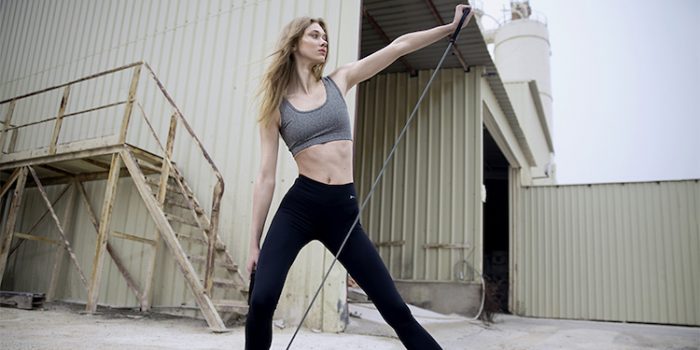Do you dream of having a wasp waist, well defined and contrasting perfectly with the hip and bust? Then you have to get to work. In this post, we point out some lower back exercises and other guidelines to make you feel 100% comfortable with this part of your body.

Lumbar Exercise: Cardio + Strength
To localize your waist, you need to do a combination of cardio and strength training. Why? Quite simply: as we pointed out in a recent post on thinning legs, fat loss cannot be done in just one area of the body. Therefore, cardio training will make you lose weight in general, including thinning your waist. But on the other hand, strength work will allow you to focus on this area of the body, strengthening the muscles.
In fact, lower back exercises work on the entire abdominal, lateral (oblique) and lumbar regions. Only by doing a variety of exercises that encompass all of these muscles can you boast the famous flat stomach or, if you want to go further, the conversational game called “lamada chocolate bar”. And as equipment, you only need comfortable clothing, such as fitness tights. For floor exercise, you can skip your shoes and lie on the mat. But for leg exercises, you need fitness shoes.
List of lower back exercises
As we said above, cardio (aerobic) work should be the basis of waist exercises. And for this you can turn to those with whom you are most comfortable:
- Squats, Classic, Sumo, Bulgarian, Isometric, One-legged, Side Shift, etc.
- Steps: walking, pendulum, lateral, transverse …
- Jumping with or without rope
- Step, with different movements based on the step, raising and lowering it
- Burpee, an exercise that pretty much covers all of the above
With a focus on waist exercises that have a strength component (anaerobic), you can take note of the following suggestions:
- Contraction of the muscles: one of the easiest, as it is done in a prone position, similar to the abdominals, from where you have to contract the abdomen without lifting the torso. That is, keeping the lower back glued to the floor
- Abdominals: best known to all, can be performed in various positions. Of course, classic, but also in V (with legs extended and raised)
- Plank: in a position similar to the lower arms, but supporting the forearms and elbows and maintaining posture for 20 or 30 seconds, increasing as the days go by
- Right angles: lying down, with the support of the back, legs together and straight, forming an angle of 90 degrees with it. You will need to maintain a position by the same criteria as the iron
- Bends: With a movement similar to the abdomen but performing a lateral twist, that is, bringing the elbow of one arm to the opposite knee. This can also be done with a Swiss ball
- Side plank: Another bending exercise because, unlike a regular plank, the rectus abdominis does not work
- Touching the ankles: in the starting position, similar to the position of the contractions or abdominals, the hands should be brought to the ankles with arms extended, alternately. This is a very effective oblique exercise
- Lumbar: Possibly the least common, but should not be overlooked when training the lower back. While lying down, you should simultaneously raise your torso and legs
Except for exercises in which the position must be maintained for a few seconds (contraction, board, right angles), a series of repetitions should be performed depending on the capabilities of each person (Usually 15 to 30 reps) and about 10 seconds of rest between episodes.
